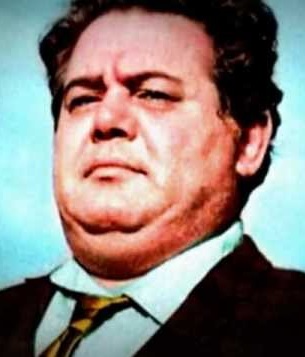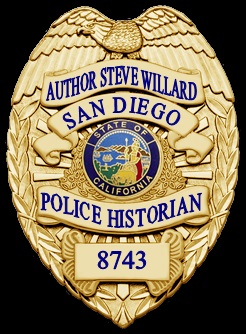

At first friends didn’t take him serious, but when word of the presidential threats got back to the Secret Service they sent agents to talk to Byck in his Pennsylvania home.
Byck admitted making the threats but said he was drunk at the time and didn’t really mean it. Because of the overwhelming amount of people who make statements about harming the president, Secret Service policy states unless someone is deemed a serious and immediate danger, he or she isn't placed under surveillance. Instead, the agency compiles a file on the individual and, unless more threats are made, or the person shows up for a White House tour, no more action is taken. Byck was interviewed for several hours and told not to make threats about the president.
Several months later the Secret Service again received a call that Byck was threatening to kill President Nixon and once again agents went back and spoke with him. After searching his house and determining Byck was suffering mental illness, but probably not much of a threat, agents chose not to arrest him.
On Christmas Eve 1973, Samuel Byck showed up on a sidewalk outside the White House in a Santa suit protesting the U.S. Government. Unknown to the uniformed Secret Service agents who stood outside the White House watching him, Byck had worn the suit some twenty years before as a bit part in a play entitled “Assassins.” The subject of the play was the history of Leon Czolgosz, Charles J. Guiteau and John Wilkes Booth. All were men who had killed a President of the United States.
After the Christmas protest Byck was quiet for the next several months as he slowly hatched a plan that he called “Operation Pandora’s Box.”
On February 22, 1974, Byck was ready to put his plan in action. As he drove to Baltimore Washington International Airport, Byck dictated his last thoughts into a tape recorder. “I will try to get the plane aloft and fly it toward the target area, which will be Washington, D.C. I will shoot the pilot and then in the last few minutes try to steer the plane into the target, which is the White House.”
Byck parked his car in the parking lot and walked towards the airport terminal. Before going in, he found a mailbox and sent the tape to Washington Post Columnist Jack Anderson.
Byck entered the airport shortly before 7:15 a.m. and walked briskly towards the Delta Airlines check in area. As a security guard was inspecting the carry on bags of awaiting passengers, Byck walked up and shot him in the back. As the guard lie dead on the floor Byck sprinted to Delta Flight 523 bound for Atlanta. Quickly boarding the DC-9, Byck slammed the door and went straight into the cockpit where the pilots were doing a pre-flight instrument check. Byck held a gun to the co-pilots head and demanded the men get the plane airborne. The pilots tried to stall for time, first telling Byck they needed to finish the instrument checks and then that the wheels of the jet needed to be unblocked. The longer the men delayed the more agitated Byck became. Suddenly, Byck shot the co-pilot in the back of the head killing him instantly. Before the pilot could react, Byck shot him in the right shoulder.
As this was going on, a Baltimore police officer had made his way to the outside door of the jet and was peering inside hoping to see what was happening. As the pilot was trying desperately to comply with the madman, Byck stepped out of the cockpit, grabbed a passenger and started screaming at her to fly the plane. As Byck tried to drag the terrified passenger into the cockpit, the police officer outside the plane fired two shots through the door window and Byck fell to the floor severely wounded. As police officers closed in on Byck, he put his gun to his head and killed himself. The siege was over.
As investigators processed the crime scene, one of them rolled Byck over and found a gasoline bomb strapped to his chest.
It was later learned Byck focused on President Nixon not because he wanted a more accountable government but because he had been rejected for a government loan from the Small Business Administration.
As scary as the plot to kill the president may seem, there wasn’t much chance of it succeeding. Even if the plane did smash into the White House, President Nixon wasn’t there. Because of the rapidly unfolding Watergate scandal, Nixon was hunkered down at another location figuring out how to survive it. Ironically, Watergate killed Nixon politically but it would have saved him physically. The scandal is also the reason this bloody plan has largely been forgotten.
Could an aerial attack on the White House occur? Hard to say but who would have believed September 11th was possible?

TO KILL A PRESIDENT
The plan was to get aboard a commercial airliner, burst into the cockpit and, at gunpoint, take over the plane and crash into the White House to kill the President of the United States. At first glance this might sound like the Al-Queda plot of September 11th with the intended target being President George W. Bush, but it was actually the plan of an American citizen hatched in early 1974 and the victim was supposed to be Richard Nixon.
Samuel Joseph Byck (pronounced Bike) was a 44-year-old divorced, emotionally unbalanced, tire salesman who frequently sent long, bizarre taped messages to various celebrities including scientist Jonas Salk, Senator Abraham Ribicoff and composer Leonard Bernstein. The tapes were ramblings about everything Byck saw as being wrong in America but, other than being annoying, there was no cause for alarm.
By 1972 things began to change when Byck’s behavior went from strange to downright dangerous. He began telling friends and associates that he needed to kill President Nixon to put an end to a system of corrupt American politics.



The CRIME FILES
